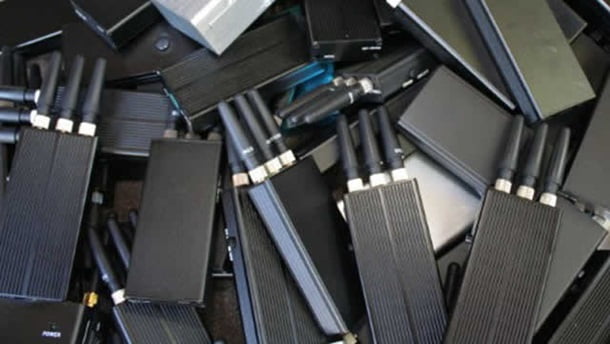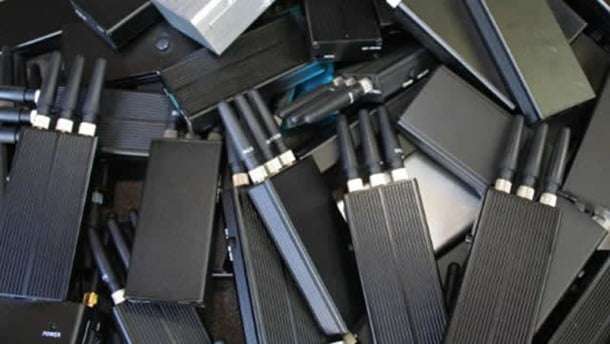- Why Are Signal Jammers Illegal in Australia?
- What Types of Jammers Are Banned?
- Real-World Consequences of Jammer Use
- How Does Australia Enforce the Ban?
- Are There Any Exceptions?
- FAQ: Signal Jammers in Australia
In Australia, signal jammers—whether for mobile phones, GPS, Wi-Fi, or drones—are strictly illegal. The Australian Communications and Media Authority (ACMA) enforces a permanent ban under the, with penalties reaching $412,500 or 2 years imprisonment. Beyond legal consequences, jammers disrupt emergency services, public safety, and everyday communications. This article explores Australia’s jammer regulations, real-world risks, and why even “well-intentioned” use can be deadly.
Why Are Signal Jammers Illegal in Australia?
Signal jammers are illegal in Australia because they disrupt essential radio communications, including emergency services like Triple Zero (000). These devices don’t discriminate—they block all signals within their range, creating potentially life-threatening situations. For example, if someone uses a jammer on public transport, it might stop noisy phone calls, but it could also prevent a passenger from calling an ambulance during a medical emergency.
The risks go beyond inconvenience. In 2021, the Australian Communications and Media Authority (ACMA) intercepted over 200 illegal jammers at customs, demonstrating the seriousness of enforcement efforts. These devices don’t just affect mobile phones—they can interfere with GPS navigation used by emergency vehicles, disrupt Wi-Fi networks, and even cause drones to malfunction unpredictably.
Here’s a breakdown of why jammers are strictly prohibited:
| Type of Jammer | Potential Consequences |
|---|---|
| Mobile phone jammers | Blocks emergency calls, disrupts networks, aids criminal activity |
| GPS jammers | Interferes with navigation for police, ambulances, and fire services |
| Wi-Fi/Drone jammers | Causes service outages, risks public safety if drones crash |
| Mobile boosters | Degrades network performance for other users |
Beyond the technical risks, there’s a social aspect to consider. While some might see jammers as a way to enforce “quiet zones,” they ultimately deprive people of a service they’ve paid for. Parents can’t call childcare centers, businesses lose connectivity, and emergency responders face communication blackouts. The Radiocommunications Act 1992 makes it clear—there are no exceptions, even for privacy or security claims. Penalties include fines up to $412,500 or two years in prison.
If you’ve ever been frustrated by a loud phone conversation in public, I get it. But jammers aren’t the solution. They’re a blunt instrument that creates more problems than they solve. Australia’s strict ban reflects the real-world stakes—when seconds count in an emergency, reliable communication shouldn’t be compromised.
What Types of Jammers Are Banned?
The Australian Communications and Media Authority (ACMA) strictly prohibits several types of jamming devices under its updated regulations (March 2025). These bans are in place to protect critical communications and ensure public safety. Here’s a breakdown of the prohibited devices:
- Mobile phone jammers (PMTS): These devices disrupt calls, texts, and emergency services by interfering with signals between mobile phones and base stations. Their use can block access to emergency services like Triple Zero (000), posing serious risks in life-threatening situations.
- GPS jammers (RNSS): Designed to interfere with satellite navigation systems, these jammers can disrupt services relied upon by police, ambulances, and aviation. For example, a GPS jammer could prevent emergency vehicles from reaching their destinations quickly.
- Wi-Fi/drone jammers (RLAN/RPAS): These devices can cause drones to crash or disable business networks. In one scenario, a drone jammer might force a delivery drone to lose control, endangering people and property below.
- Mobile boosters: Even signal amplifiers are illegal without ACMA approval, as they can weaken network performance for other users and interfere with legitimate communications.

Source: ACMA seizure data (2025)
The ACMA’s ban isn’t just about inconvenience—it’s about safety. Imagine a hospital losing GPS signals for its ambulances or a firefighter unable to communicate due to a rogue jammer. The consequences can be dire, which is why Australia enforces these rules with hefty penalties, including fines up to $412,500 or imprisonment.
While some might argue for jammers in places like cinemas or libraries, the risks far outweigh the benefits. A single jammer can disrupt communications for an entire neighborhood, not just the intended target area. It’s a blunt instrument with potentially deadly side effects.
If you’re in Australia, remember: there’s no legal way to use these devices. The ACMA works closely with border forces to intercept and destroy illegal jammers before they even hit the market. So, while the idea of a phone-free zone might sound appealing, the reality is that jammers create more problems than they solve.
Real-World Consequences of Jammer Use
In 2023, a Sydney café owner faced severe legal repercussions after installing a mobile phone jammer to enforce a “quiet atmosphere” for customers. The device, marketed as a solution for reducing noise pollution, had unintended and dangerous consequences—it disrupted critical pager communications in a nearby hospital, delaying emergency response times. The Australian Communications and Media Authority (ACMA) imposed an $85,000 fine, emphasizing the broader risks of such devices.
ACMA Chair Nerida O’Loughlin highlighted the case as a stark reminder: “Jammers don’t discriminate. What might seem like a minor nuisance to some can literally be a matter of life and death for others.” The incident underscored how even localized jamming can ripple outward, affecting essential services like healthcare, public safety, and transportation.
Beyond fines, offenders risk:
| Violation | Potential Penalty |
|---|---|
| Operating a jammer | Up to $412,500 or 2 years imprisonment |
| Importing/supplying jammers | Seizure of devices + additional fines |
This case isn’t isolated. In Melbourne, a frustrated commuter attempted to use a jammer on a train, unknowingly blocking Triple Zero (000) calls for 15 minutes until transit police intervened. Such real-world examples demonstrate why Australia’s ban—in place since 1992—remains strictly enforced. The laws aren’t just about preventing annoyance; they’re about safeguarding the communication infrastructure that keeps society functioning.
How Does Australia Enforce the Ban?
The Australian Communications and Media Authority (ACMA) has implemented comprehensive enforcement strategies to combat the illegal use of signal jammers, focusing on both prevention and deterrence. Through coordinated efforts with law enforcement and logistics partners, the authority maintains strict oversight of potential jammer distribution channels.
Critical components of the enforcement framework include:
- Advanced scanning technologies at international entry points to identify concealed devices
- Partnerships with e-commerce platforms to remove listings for prohibited equipment
- Undercover operations targeting black market distributors
- Educational initiatives highlighting the societal impact of communication disruptions
| Regulatory Violation | Legal Consequences |
|---|---|
| Device Operation | Substantial financial penalties and potential incarceration |
| Commercial Distribution | Hefty corporate fines and asset forfeiture |
| Cross-border Trafficking | Customs confiscation with possible criminal charges |
Many individuals underestimate the legal ramifications of merely owning prohibited equipment, as authorities maintain a zero-tolerance policy. Enforcement personnel often cite cases where confiscated devices were destined for use in sensitive areas, potentially compromising public safety systems.
The multi-layered prevention approach emphasizes:
This comprehensive strategy combines punitive measures with awareness campaigns, creating both disincentives for would-be violators and public understanding of the risks. The dual focus on enforcement and education has proven effective in maintaining communication network integrity while deterring potential offenders.
Are There Any Exceptions?
Australia enforces an absolute prohibition on signal jammers with no exemptions, contrasting with certain nations that allow limited government use. The Australian Communications and Media Authority (ACMA) mandates this blanket ban due to the catastrophic potential of these devices to compromise critical infrastructure. Even authorized personnel must utilize passive blocking technologies like electromagnetic shielding instead of active jamming equipment.
The policy’s rigidity reflects documented incidents where signal disruption endangered lives—such as delayed emergency responses due to blocked communications or misdirected first responders from GPS interference. These scenarios demonstrate why Australia’s regulatory framework prioritizes network integrity over any situational convenience.
For those seeking compliant signal management, ACMA-endorsed solutions exist that isolate signals without broadcasting disruptive interference. Violations carry severe sanctions, reflecting the gravity of maintaining uninterrupted communication channels for public welfare.
FAQ: Signal Jammers in Australia
Can I buy a jammer for “personal use”?
No. Purchasing, owning, or operating any jammer is illegal. Online sellers claiming otherwise are scams—ACMA routinely shuts down such sites.
What if my neighbor uses a jammer?
Report it immediately to ACMA via their. Anonymous tips are accepted.
Why not allow jammers in prisons or schools?
ACMA’s 2024 review concluded that jammers are “too blunt an instrument.” Prisons now use managed access systems instead.
